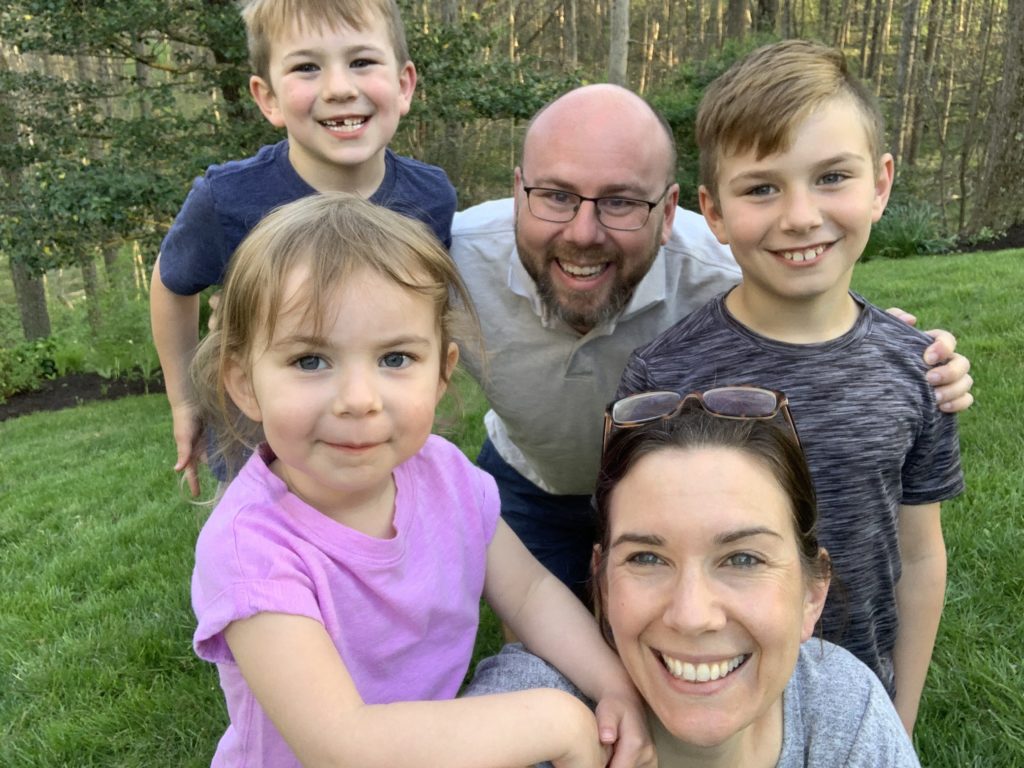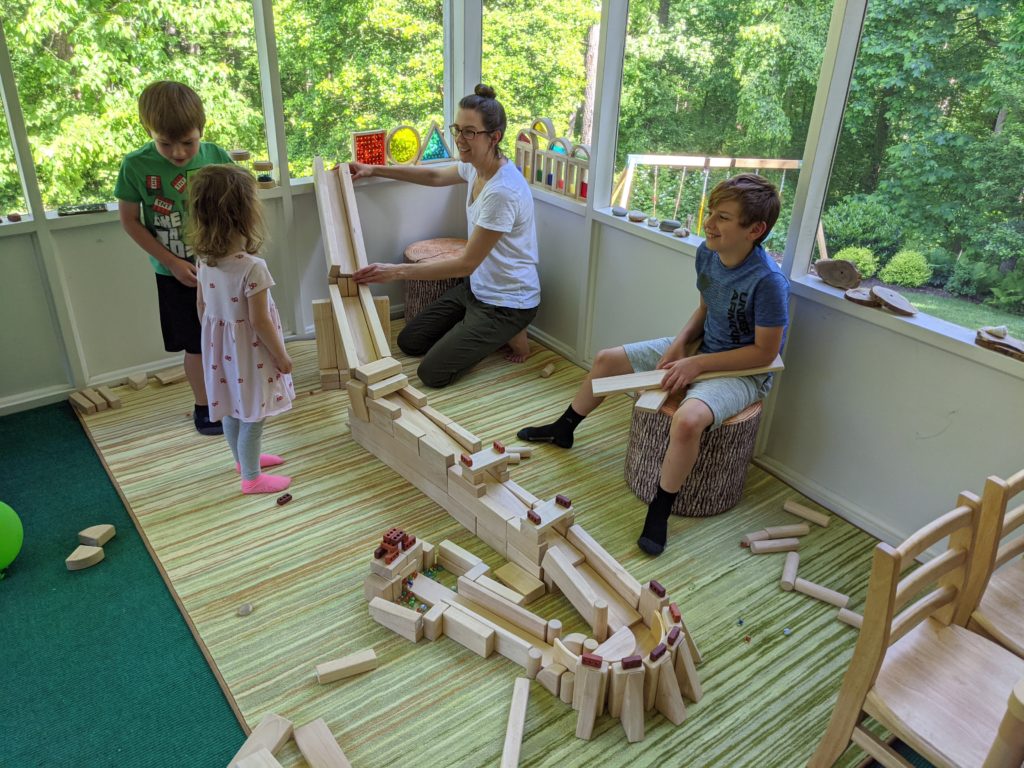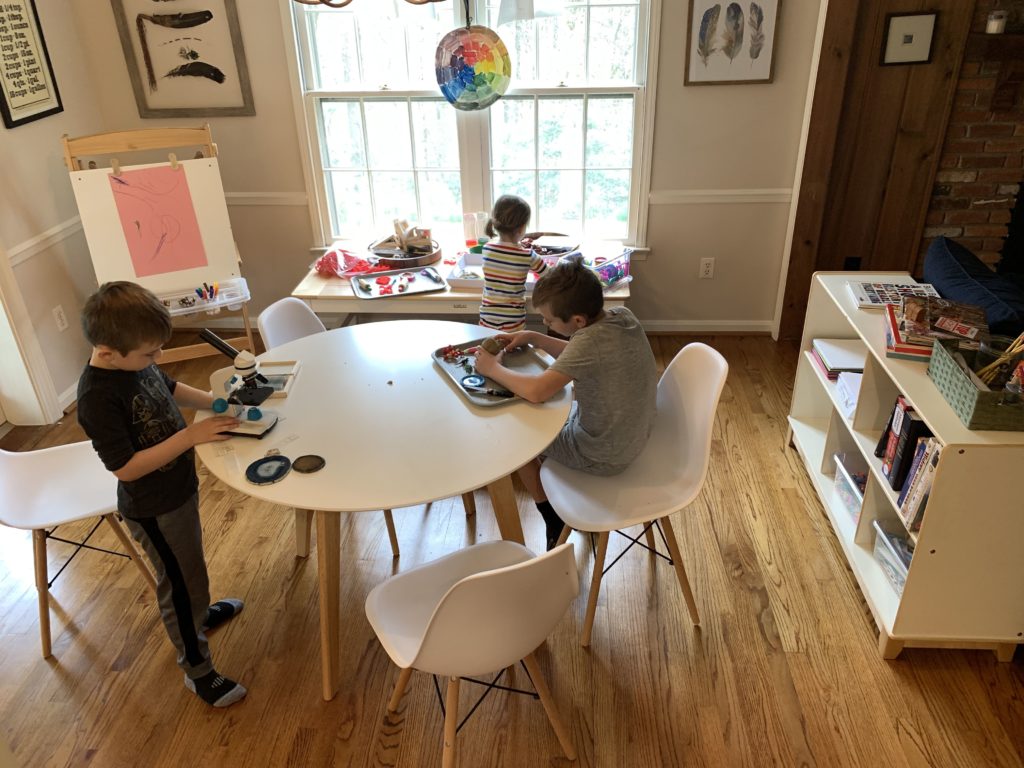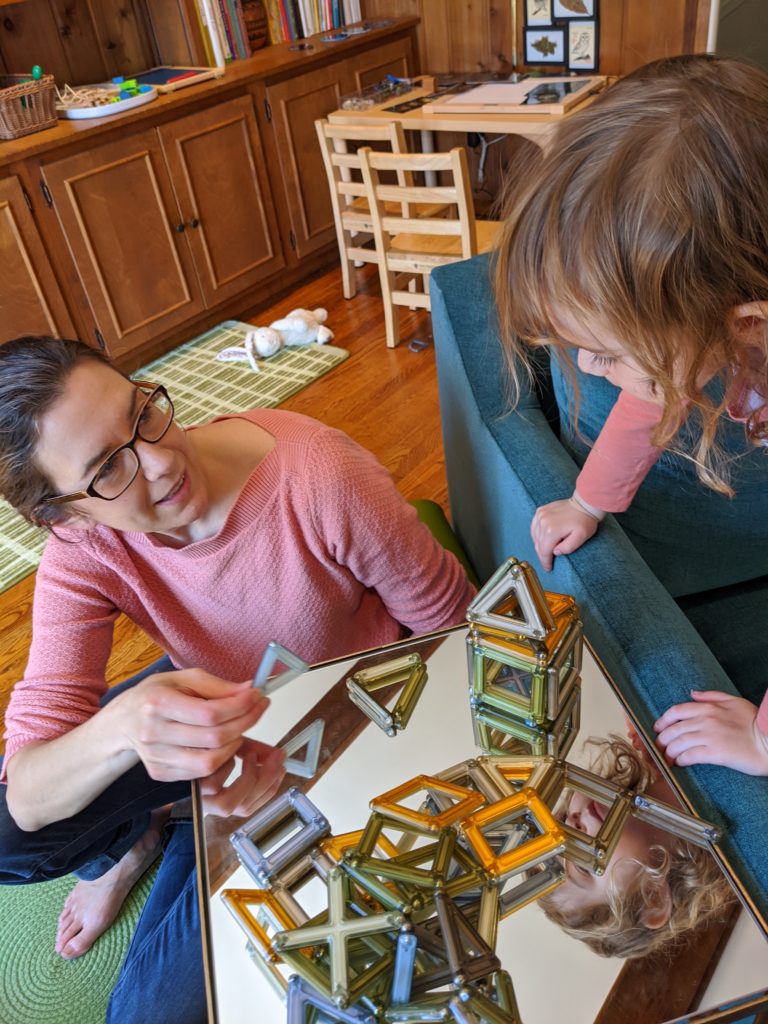Company: Guidecraft
Title: Director of Architecture and Environmental Design
Years in the education business: 20+
I am a licensed architect and have been in that industry for over 20 years, including running my own architecture practice, L. K. Magee Architecture + Design, for the past decade. I remained connected to education and the classroom as an architecture design studio and seminar instructor at Illinois Institute of Technology in Chicago and Drexel University in Philadelphia for many years. Once I had children, I became involved with early childhood education and public K-12 schools initially as a parent, and then as an architect and educator, and eventually ran for and was elected to my local Board of Education while living in Vernon, NJ, and served as the school board Vice-President.

I spend a lot of time researching ways that education theory, practice, pedagogy and policy shape how and where children learn. My husband and I have three young children, ages 3, 7 and 9, and they have inspired me to delve deeper into the shaping of learning environments and educational experiences professionally and in our home. Because of the confluence of my interests — architecture, education and children — I began working with Guidecraft five years ago and am the Director of Architecture and Environmental Design for that company.
When was your company founded and how (brief history)?
Founded in 1966 by Fred Fein, Guidecraft was built upon a foundation of well-crafted wooden toys for children. In the 1980’s the company was expanded under the ownership and direction of Fred’s son, Jason Fein, to encompass toys and furniture for both the consumer and education markets. In the mid 2000’s the company was further enhanced to provide toys and furniture to the domestic and international markets, as well as providing private-label supply chain, compliance, and distribution services to a roster of international brands in both the consumer and institutional markets.
How did you get started in the educational products business?
Children have an increased opportunity to flourish when they are offered experiences, choices and products that provide them a sense of ownership and individualization, such as open-ended toy systems that promote creativity, collaboration and problem-solving, along with flexible and accessible learning environments, and direct connections to the outdoors. Products and materials must be durable, meaningful, visually interesting, and safe for the educational environment.

I spend a lot of time thinking about what children are working on, what materials they are working with, and where they are spending their time when they are in school: what is the overall quality of this experience and how does that affect how they learn, and how they feel? Does it facilitate interaction and collaboration, do they have a chance to look out the window and daydream? Do they get to choose where they are working, and can they find a place to have a moment to themselves during the day?
As an architect, whether I’m designing spaces for adults or children, I strive to balance aesthetics with timelessness, function and health. Learning environments must be detail-oriented and intentionally designed for engagement, education and enjoyment, while being mindful of the needs, health and safety of the occupants (children, teachers and families). With Guidecraft I am fortunate to get to blend all of these aspects of design in the creation of learning environments for young children through the design of products, furniture, furnishings, equipment and the physical space.
What makes your company unique/successful?
Guidecraft is headquartered in New York, but we have offices around the world. We have industrial designers who specialize in the design of toys and products as well as furniture and equipment designed for children; we also have graphic designers whose work on packaging and supporting informational materials help engage educators and parents; and in my area of expertise, I work closely with colleagues overseas on the architectural and interior design of learning environments.
Our team is international, so we have a lot of exposure to a wide range of teaching styles and curricula, as well as schools, teachers and classrooms from different countries and cultures around the world which results in design work that is diverse and inclusive. We frequently collaborate with authors, researchers and education specialists to ensure that our design solutions are informed by practice, theory, and research. Because we approach education design solutions for children from so many different angles and scales, from the smallest toy to large spaces for learning and everything in between, we are quite holistic in how we think about addressing children’s developmental needs.
How has your company adapted to the pandemic?
Prior to the COVID-19 outbreak, I spent most of my work week designing schools and classrooms for centers in the United States and abroad with my team at Guidecraft. But, when much of the world closed down, including most schools, my work shifted. Additionally, my children’s schools were also shuttered so they were home from school indefinitely and like many parents and caregivers, I found myself having to support their distance learning while balancing my own work.

I turned my design lens towards solutions in my own home that would support my children’s continued learning by drawing from my professional knowledge of classroom design. I set up dedicated spaces for them to work, play and be while they are home, separate from my home office so my husband and I could alternate our work schedules; I developed project-based learning opportunities for them that incorporated differentiated learning for their wide range of ages; I made sure to provide structured independence for them (so that I could also have a bit of independence, too!) by setting out materials and supplies that they could access on their own; and together the kids and I developed a daily schedule as a guide that balanced outdoor time with school work and individual choice.

I began to document these efforts, realizing that other parents were likely also struggling with managing this “new normal” of balancing kids, school, work and other daily responsibilities from home with minimal outside support in the midst of a global pandemic. It was from this that my video blog “Lauren’s Learning Lab” was born. I am developing the video series in collaboration with Guidecraft, and each episode focuses on a relevant topic that helps bridge the gap between traditional school and at-home learning. The strategies are research- and practice-based for meaningfully engaging kids while demonstrating that the intentional design and set up of the environments we spend our time in has an impact of the quality of our experiences.
I began to document these efforts, realizing that other parents were likely also struggling with managing this “new normal” of balancing kids, school, work and other daily responsibilities from home with minimal outside support in the midst of a global pandemic. It was from this that my video blog “Lauren’s Learning Lab” was born.
But, that’s not to say that the design solutions are “Architecture” with a capital “A”! Instead, the kids and I collaborated on the major creative decisions for setting up the space, the kind of work they’d do in each zone, how they’d access what they’d need, and what each space should “feel” like. This was based on their own experiences in school and what would translate well to our home, versus what they’d prefer to do away with in favor of better solutions. This has given them creative ownership over their learning environment in “Lauren’s Learning Lab” and has made the experience so much more meaningful.
What challenges have you taken on during the stay-at-home period?
My husband and I are both working from home, so with the addition of our three children in the house indefinitely, balancing our workload (and sanity!) along with our children’s schedules and needs, without any option for childcare, was the biggest challenge. While design can’t solve all problems, it was my go-to in this situation since I knew we needed to dedicate a real and semi-permanent space to the children’s home-based learning for the duration of the stay-home orders that would augment the distance instruction from their schools and hands-on activities that we could provide them.

I looked to several pedagogical models for inspiration, including the Montessori Method for preparing materials that would inspire child-led exploration and the Reggio Emilia approach where the classroom is the “third teacher,” as well as ensuring that nature – both directly and indirectly – became a part of our everyday experience. This influenced design decisions, our daily routines and ultimately how and where learning takes place. The core lessons from the children’s schools were also part of our day, but we extended them with our own books, supplies and other resources that we had on hand, giving my elementary-aged sons the opportunity to delve deeper into topics that were of interest through hands-on activities, reading and research, something that isn’t always possible in an average-sized, rigidly structured classroom of 25+ students. This also helped me balance the inevitable increased reliance on digital media and screen time due to their livestreamed classes and online content with hands-on and self-directed learning.
What is your typical post-COVID day like?
I begin my workday at my desk before my kids wake up, with the hopes of clearing my inbox of the most pressing items and checking several tasks off my work to-do list. My children have kept to their traditional school day schedule of waking up early, so with the help of their internal clocks we manage to fit in outdoor time before we sit down for school work in the morning, helping to ensure that focused attention comes a little more easily later in the day.

During the school year, mornings are dedicated to their schoolwork and online classes with their teachers. We have also established a “maker” time where my sons work on a project of their own choice – right now, it’s a wood marble run that they’re building – and I work with my preschool-aged daughter on a related project, usually a smaller version of what her older brothers are doing. My workday resumes later in the afternoon and extends into the evening. Now that summer has begun our routines have shifted away from the required distance-learning online, but self-directed and project-based inquiry is still a priority – when the kid’s initiate something of their own choosing, it remains interesting to them, and can be educational even if it doesn’t look like a traditional classroom project.
What do you like best about the educational products industry?
Through educational products, we have the opportunity to meet children’s needs at a broad range of scales from the smallest toys, to equipment for sitting, moving, climbing or socializing, to the larger spaces children occupy throughout the day. Since children are kinesthetic learners, at Guidecraft we are mindful of the materials, details, shapes, textures and connections of any products they interact with, along with the fact that a child’s eye height, perception and method of engagement is much different than our own as adults. By trying to see and experience the world from the child’s point of view, we begin to get a very different sense of our spaces and surroundings which in turn affects our design solutions. And, by expanding our design solutions outward, from small objects and products to designed environments (interior and exterior) we have the opportunity to extend the magic of childhood into holistic spaces that are created with children’s needs, growth and development in mind.
How had EDmarket helped your business?
Through EDmarket resources, I’ve had the chance to learn from professionals in many realms of education. The education of children is so important and the opportunity to share resources and ideas with others in the industry is essential. EDmarket provides a diverse platform for that.
What one piece of advice would you give others in our industry?
As adults responsible for creating the products and spaces children interact with in an educational setting, we have to remind ourselves constantly that a child’s point of view is so very different from our own physically, emotionally, cognitively and socially. Children’s patterns of play and engagement are as important as — and sometimes more important than- the textbook work that they engage in. Offering children a sense of ownership over what they engage with, and how they engage, makes a tremendous and positive difference in a child’s life.

